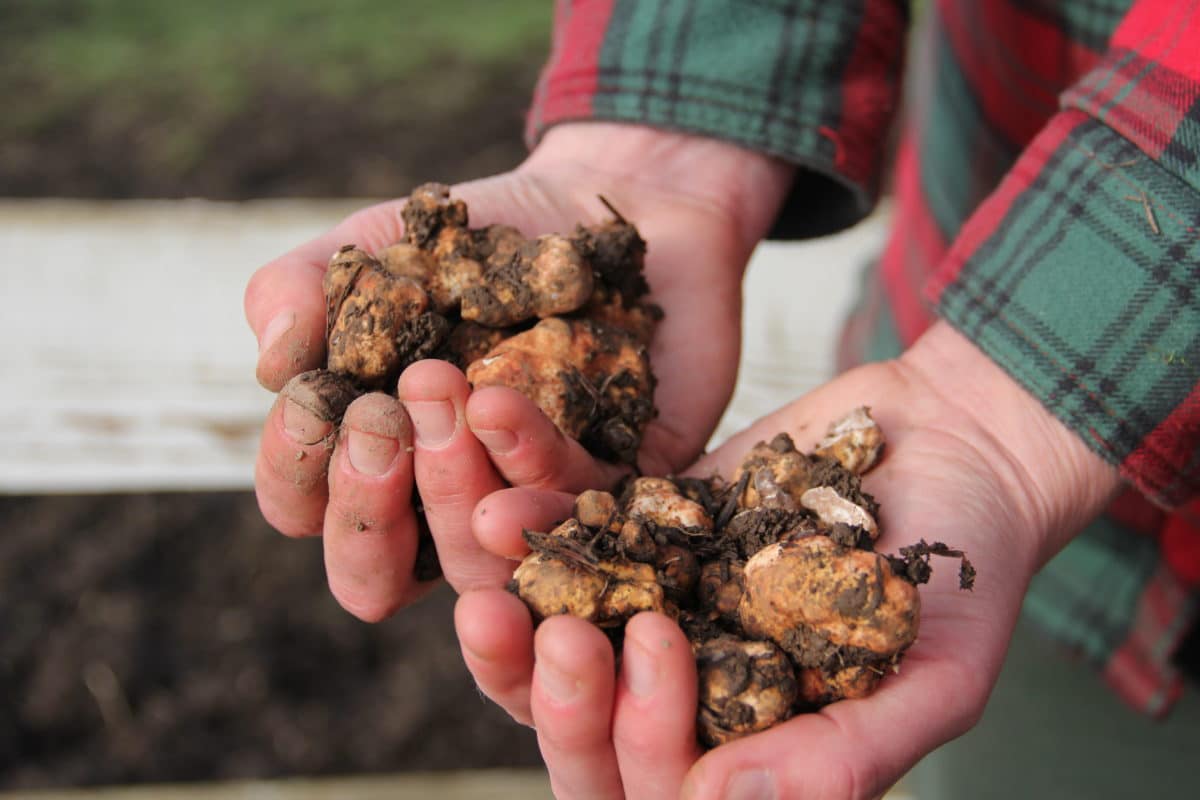My husband, Clay, has a recipe for squirrel potpie. And there’s a funny story that I like to tell about Clay when we’re not in polite company that involves him making and eating that potpie the night before meeting with a nutritionist to discuss his diet. But that’s not what got me thinking about squirrels; truffles did. The real, beautifully stinky kind that grow in the woods behind our house. The kind that, when you first get a whiff of them from the open mouth of a mason jar, nearly brings you to tears in a way that you’re not sure if it’s good or bad. The kind of aroma that you don’t talk about in polite company, or at least not if that company has never forked over a fistful of cash for a tiny sliver of fungi that graces the steaming mound of risotto before them. So what do squirrels—northern flying squirrels, to be exact—and truffles have in common? Well, it just so happens that the squirrels that call my woods home have one of the most sophisticated (and expensive) palates of any squirrel on earth. The Oregon white truffle is a key dietary element of the squirrels around here, which is why you’ll find my husband and me making our best squirrel impressions as we scrabble through the piney duff on our hands and knees. Somebody’s got to beat those rodents to the good stuff.
There was never a real expectation of finding truffles here. The former owner of our land had been kind enough to suggest that there might be a truffle or two beneath the rich layer of composted pine needles that had accumulated ever since she planted the Douglas firs back in 1995. She said she had never found any, but that someone once told her there might be some out there. To us, looking at the expansive thirty acres of lean trunks tucked in dark and close together, it was a distant possibility. A needle in a haystack that would have to wait.
But after a year had passed and we were experiencing our first real Oregon winter and all the rain and gloom that comes with it—lamenting the fact that we had run out of things to harvest from the woods and fields around us—YouTube and Jack Czarnecki of Oregon truffle fame convinced Clay that we had truffles on our land waiting to be found, waiting to be rescued from the greedy paws of those flying squirrels. So with a rake and a heavy dose of skepticism (why does this appear to be a theme in our adventures?), I followed Clay into the woods, convinced that we would find nothing worthwhile, if we found anything at all. We knew all the criteria and seemed to meet it: evidence of digging by rodents, Douglas firs in the 15-40 year-old range, being within a short window of time from late December to early February. The first few trees we searched around gave us nothing; then Clay began turning over the richer, more chocolate-y brown, denser earth beneath one tree that looked like it had frequent visits by our flying nemesis. The earth clung to the tines of the rake as Clay peeled back the layer of duff.
On my knees I shuffled around to search the root lines, still unconvinced. Only moments after the words “I’ll eat my hat if we find a truffle” left my mouth, a flash of white. There it was. Our first truffle. Quickly followed by a half-dozen more. Then a dozen. Following the roots of the fir tree, the truffles formed a vein like gold.
And that’s how truffles enrich their environment: forming a symbiotic relationship with the Douglas fir that towers over them, the truffle grows along the tiny tendrils of roots that extend under a shallow layer of duff. The truffle absorbs nutrients and oxygen that benefit the fir tree, and reaps the reward of being in the habitat of the animal that will consume and spread the spores of the truffle.
The truffles we found that day enrich our environment, too. Though countless people counseled us on the price we could command for the several ounces of Oregon whites we possessed, it seemed like a better idea to enjoy them ourselves. True, we became a little mad with the prospect of this aromatic and potentially lucrative gold mine in our back yard, but the real fun came from telling people about our success, experimenting in the kitchen, and trading stories and recipes with other Oregonians. A truffle-for-wine trade is in the works and there’s still a bundle of the ripe fungi in the freezer, safe from marauding squirrels. ![]()
First published June 2015
